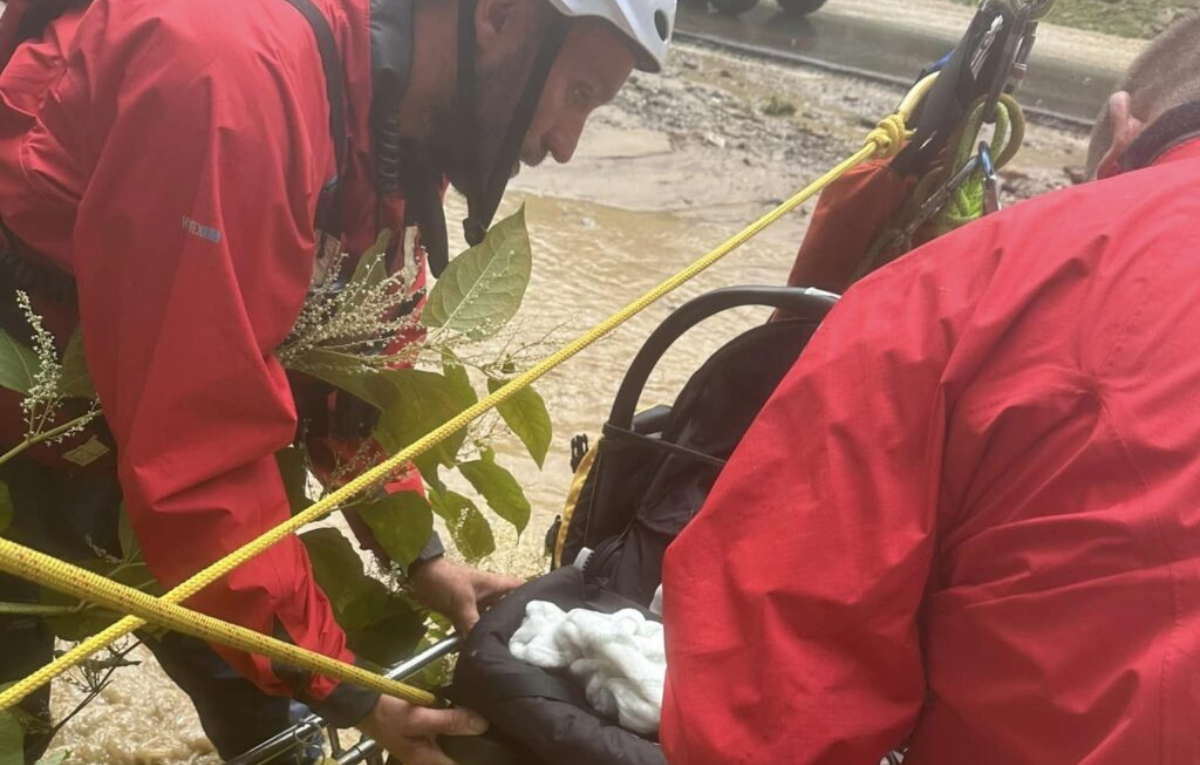The unofficial damage toll for communities hit the hardest by Monday and Tuesday’s floods will not be known for several days. And that’s if the weather cooperates.
Kanawha County Commission President Kent Carper said he has talked with people who have suffered devastating loss after up to nine inches of rain fell in a short span of time in some areas.
“We had no warning. The high river was our warning,” Carper said. “When the calls started coming to 911 and people were literally running out of their homes fleeing, and roads were being covered up, washed out, that was our warning. And then the National Weather Service put out just about the strongest alert they know how to put out for floods.”
Carper said the unusual weather pattern created the perfect storm for areas already deluged by a downpour of rain on Saturday.
“They were already saturated, the creeks were full, ” Carper said. “There was nowhere for this massive amount of rain to go.”
While immediate rescue efforts by the National Guard and firefighters mitigated a potential loss of life, reports of damage to properties and homes is high. Carper said he sees the need to request federal assistance and attempt to meet the disaster declaration threshold to offset the flood damage.
“We’re going to work with our citizens, neighbors, friends, try to get federal assistance, work with Congress, with Senators Manchin and Capito, and Congresswoman Miller,” Carper said. “We always hear, ‘Well there weren’t that many deaths.’ Well, when someone loses everything they own, that is devastating.”
The Kanawha County Commission meanwhile has announced supply distribution points for flood victims at the following locations from 8:00 a.m. to 4:30 p.m. daily.
- Belle Town Hall located at 1100 E Dupont Ave, Belle
- Chesapeake Town Hall located at 12404 MacCorkle Ave SE, Chesapeake
Donations, specifically, contractor grade trash bags, bleach, push brooms, and shovels will be gratefully accepted. People are requested to not drop off clothing at these locations.
The Kanawha-Charleston Health Department will be administering free tetanus vaccines in Belle this week for those affected by recent flooding.
The mobile shot clinic will be at the Belle Town Hall distribution site Wednesday through Friday from 9 a.m. to 4 p.m.
“Floodwaters carry disease-causing organisms that can lead to serious illness or even death,” Dr. Steven Eshenaur, KCHD’s Health Officer said. “Foremost, stay out of the floodwaters. If you’ve already been in them or are conducting cleanup now, please make sure your tetanus shot is up to date”
Eshenaur said Tetanus is a serious disease but is easily preventable. “If you get a wound – small or large – tend to it immediately. Bacteria can invade your body through the smallest punctures and scratches.”
KCHD will have Environmental Health staff in the affected area this week to answer questions, test private and community wells, and help provide public health safety guidance for businesses so they can reopen as soon as possible.
Residents of homes with private or community wells are advised to contact KCHD for testing of any well, pump, springs, cisterns or pipes that have been exposed to floodwaters. Private water system testing of in-use wells serving flood-impacted homes will be free.
Call 304-348-8050 to make an appointment.
